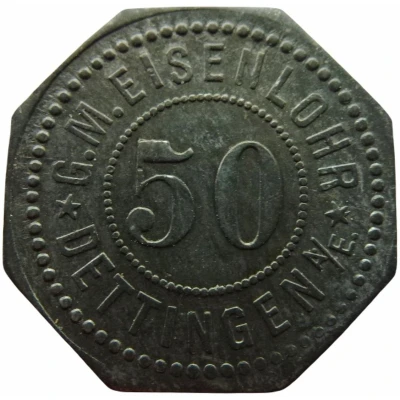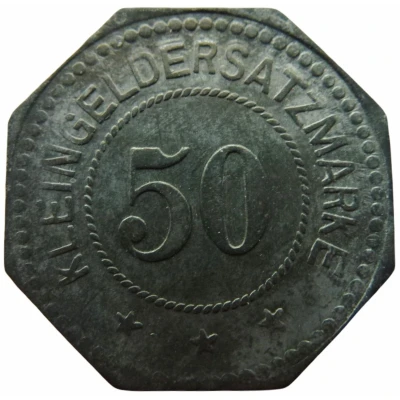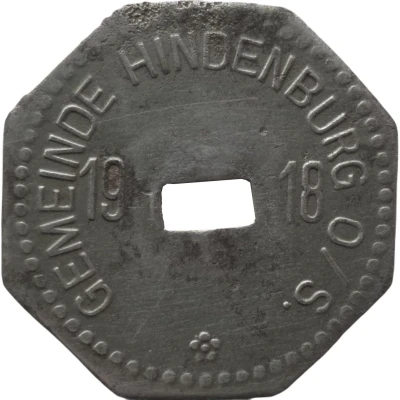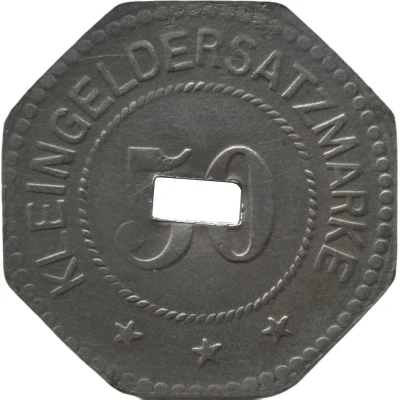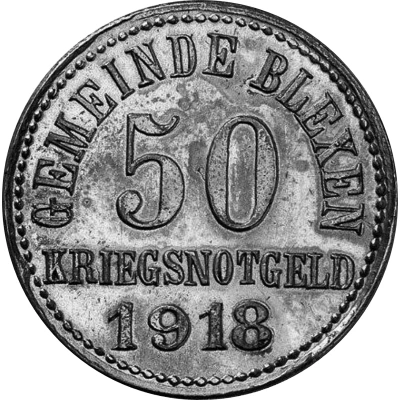
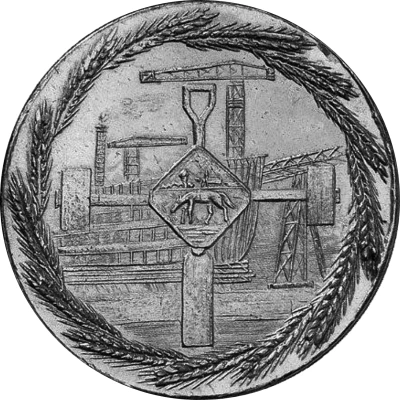

© Fritz Rudolf Künker GmbH & Co. KG, Osnabrück and Lübke & Wiedemann KG, Leonberg
50 Pfennigs - Blexen
1918 year| Zinc | 2.3 g | 23.4 mm |
| Issuer | German notgeld (Germany) |
|---|---|
| Type | Standard circulation coin |
| Year | 1918 |
| Value | 50 Pfennigs (50 Pfennige) (0.50) |
| Currency | Mark (1914-1924) |
| Composition | Zinc |
| Weight | 2.3 g |
| Diameter | 23.4 mm |
| Thickness | 1.0 mm |
| Shape | Round |
| Technique | Milled |
| Orientation | Medal alignment ↑↑ |
| Demonetized | Yes |
| Updated | 2024-10-04 |
| Numista | N#299086 |
|---|---|
| Rarity index | 93% |
Reverse
Ears of corn wreath surrounding motifs related to agriculture, cattle breeding and shipbuilding
Edge
Plain
Interesting fact
The 50 Pfennigs - Blexen 1918 coin from German notgeld (Germany) made of Zinc weighing 2.3 g is interesting because it was produced during a time of economic crisis and hyperinflation in Germany following World War I. The coin was part of a series of emergency currency, or "notgeld," that was issued by local communities and businesses to address the shortage of official currency. The use of zinc as the material for the coin was likely chosen due to its low cost and durability, and the coin's design features a simple yet elegant motif of a wheat ear, symbolizing prosperity and abundance. Despite its humble appearance, this coin serves as a reminder of the economic challenges faced by Germany in the aftermath of World War I and the resourcefulness of its people in the face of adversity.
